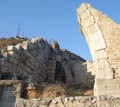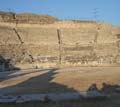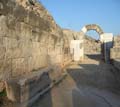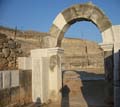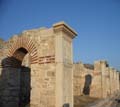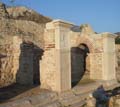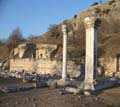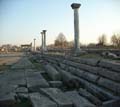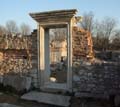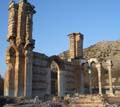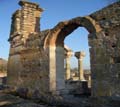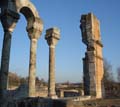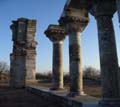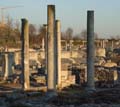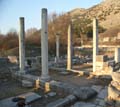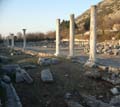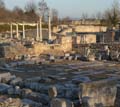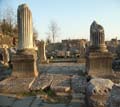
They were founded by King Philip II in 360/59 BC. with the installation of Macedonian settlers to control the gold mines in Pangaeo and Orvilos. In their place, the Thasian colony of Krinides pre-existed. The Roman Caesars Augustus and Antonius, after the battle of the same name in 42 BC. against Brutus and Cassius, they founded a Roman colony (Colonia Augusta lulia Philippensis). The city that was built according to the "horse system" is crossed by a long road running E. - W., in the place of the later Roman Egnatia. Strong walls with towers (mainly from Hellenistic and early Christian times), building blocks with Hellenistic residences and two heroes (2nd century BC) have been preserved.
The restored Roman theater (2nd - 3rd century AD) is of interest. The monuments of the Roman colony are gathered around the majestic Forum (market), between the so-called Egnatia and the Commercial Street: temples in honor of the capitol gods Zeus, Hera and Athena, administrative buildings such as the Curia (parliament), the Vasiliki (court ), the Tabularium (register), the Library and the Rostrum (speaker's stage). Separately was the commercial market (Macellum) with shops around a peristyle courtyard (2nd century AD). Other public buildings were the palaestra (2nd century AD) with well-preserved Vespasians (latrines) as well as a complex of thermal baths with recreation areas. On the southern slopes of the acropolis, outdoor Roman sanctuaries with niches and reliefs (Artemis, Cybele, Egyptian deities, Silvanus) were found carved into the rock.
Ruins of many ecclesiastical and secular buildings from the early Christian period, mainly from the 5th and 6th centuries, were discovered. Basilica A (around 500) on the hill overlooking the market, one of the most important early Christian monuments in Greece, preserves its marble floor and luxurious sculptural decoration. A wide stairway connected it with Egnatia Odos. After its destruction, a chapel was founded in the SW. corner of the atrium, above an underground tank which was decorated with frescoes (known as the "prison of St. Paul"). In the area of the Roman market, the domed basilica B (around 550) which is preserved up to a considerable height. TO. of the palaestra and the basilica B, a Roman building (baths - clubhouse) of the 3rd c. AD, in the ruins of which workshops were established (4th - 7th century AD).
The "Octagon", E. of the market, was originally founded by the bishop Porphyrios (mid 4th century) in honor of the apostle Paul and was rebuilt as a pericentric octagonal temple around 400. A mosaic inscription commemorates Porphyrios. The "Octagon" complex, the center of the city's public life until the fire of the 7th century, includes a baptistery, balanium (bath), episcopal palace (on the north side of the eastern courtyard) and other auxiliary spaces.
The semi-basement of the diocese was a storage area and a wine press (linos). Outside the eastern walls, the eastern cemetery with pagan and Christian tombs (many with frescoes), ruins of a cemetery basilica (second half of the 4th - 6th century) and a second, larger basilica. Many inscriptions from the early Christian period. In the neighboring village of Krinides, a twin Early Christian tomb with two vaulted chambers has been found. The local Archaeological Museum exhibits finds from the prehistoric settlement of Dikili Tas along with sculptures, inscriptions and architectural elements of Roman and early Christian Philippi.
Editor: Fotini Anastasopoulou










